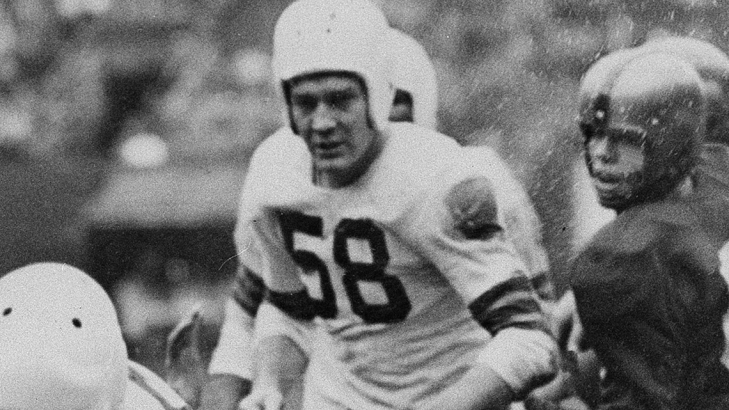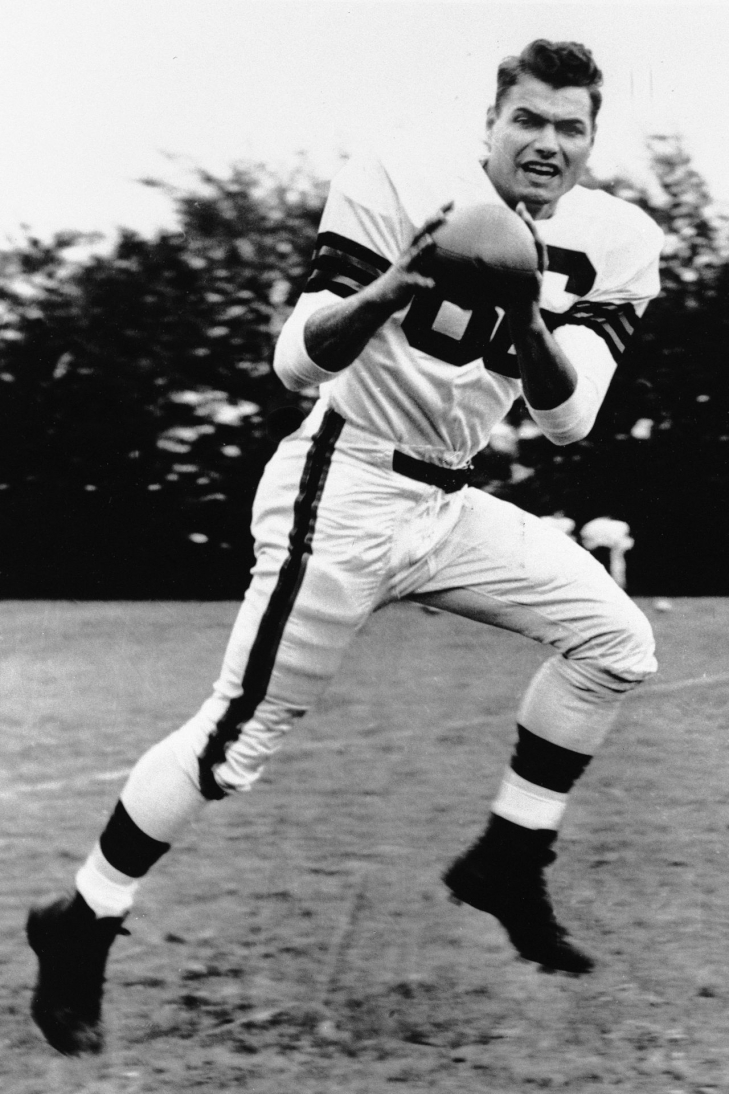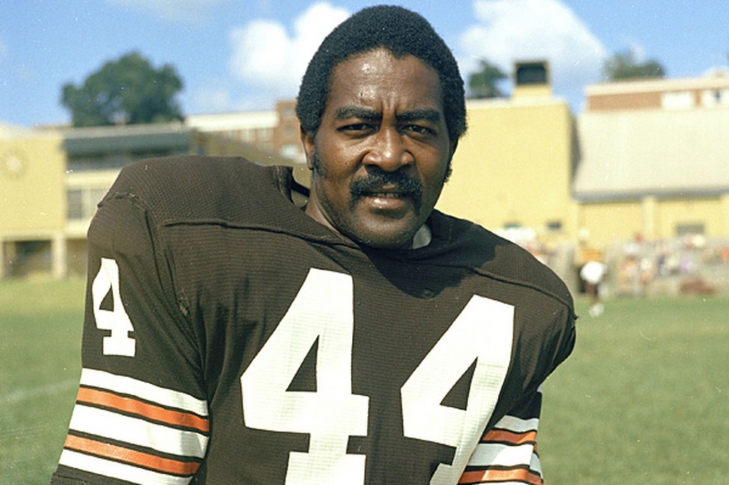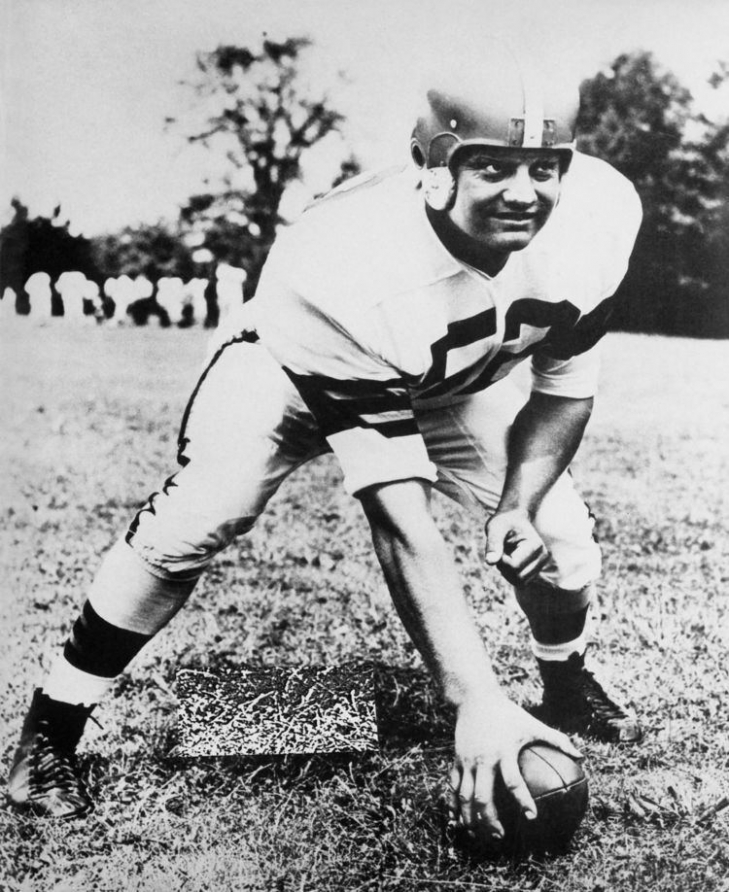
Committee Chairman
12. Mac Speedie
Mac Speedie played collegiately at Utah and was a late-round pick (15th) in the NFL Draft. He did not enter the NFL, opting instead to go to the military to serve the United States in World War II, and when he returned, he tried out and made the Cleveland Browns of the upstart All-American Football Conference.
Browns' Head Coach, Paul Brown, used Speedie in his offense at End, where he would become one of the top receivers in the AAFC. Speedie and the Browns won all four titles in the AAFC’s existence, and Speedie was the league leader in Receiving Yards twice.
The Browns migrated to the NFL in 1950, and he was named to the Pro Bowl twice, though he was unable to reach the four-digit mark in Receiving Yards as he did in the AAFC. He did, however, help Cleveland win the NFL Championship in 1950, which was his fifth in a row.
His run in the NFL could have been longer, but a dispute with Brown resulted in Speedie taking his talents to Canada, where he played three years before retiring. Speedie had 5,602 Yards with 33 Touchdowns with Cleveland.
Speedie was elected to the Pro Football Hall of Fame as part of the Centennial Class. That year, Speedie entered the Browns' Ring of Honor.
11. Dante Lavelli
Dante Lavelli played for Paul Brown at Ohio State, where the duo won the National Championship in 1942. Lavelli entered the U.S. Military in World War II, and when the conflict ended, he rejoined Brown, who built the Cleveland Browns of the new All-American Football Conference.
Along with Mac Speedie, Lavelli was a star at End who led the AAFC in Receptions (40) and Receiving Yards (843 in the league's first year. Lavelli was a consistent producer and excellent blocker, and he was a large part of why Cleveland won all four AAFC Titles. Cleveland was one of the teams that joined the NFL when the AAFC merged with the senior league, and they continued to dominate, winning the NFL Championship in 1950, 1954, and 1955. In the NFL era, Lavelli was a three-time Pro Bowler and was an instrumental cog in Paul Brown's machine.
Lavelli was enshrined in the Pro Football Hall of Fame in 1975 and was named to the first group of former players to the Browns Ring of Honor in 2010.
10. Leroy Kelly
We can't even imagine what it must have been like for Leroy Kelly to follow in the footsteps of Jim Brown.
Realistically, who could?
Despite this, Kelly, who was taken in the NFL Draft in 1964, was initially Brown's understudy and assumed the starting role when Brown shockingly retired. Kelly thrived, going to six straight Pro Bowls (1966-71) and winning the Rushing Title twice (1967 & 1968). Kelly also led the NFL in Rushing Touchdowns in three consecutive seasons (1966-68), and while his production was not equal to Brown, whose was?
Kelly rushed for 7,274 Yards and 74 Touchdowns on the ground, which for his era, was very impressive.
He entered the Pro Football Hall of Fame in 1994, and in 2010, Kelly was part of the first group of Browns to be named to the Ring of Honor.
9. Frank Gatski
Paul Brown knew that Otto Graham would be the player he built his team around and quickly adopt Marion Motley as another offensive stud. The man who helped stir that drink was an unexpected player named Frank Gatski.
Gatski played college football at Marshall and then enrolled in the American military during World War II. Following the war, Gatski tried out and made the Browns in their inaugural season of the AAFC. Gatski, or "Gunner" as he was known, opened the holes for Motley and expertly protected Graham for years. Easily the best Center in the AAFC, he helped Cleveland win all four Championships and proved his worth in the NFL as the Browns won the NFL Championship in their first year after the NFL-AAFC merger.
Gatski, who was so good, that he never botched a snap over his entire career, helped the Browns win the 1954 and 1955 Championship, and in his last year in the NFL, 1957, he was with Detroit and won an eighth title. The Browns inducted Gatski to their Ring of Honor as part of the inaugural group in 2010.





